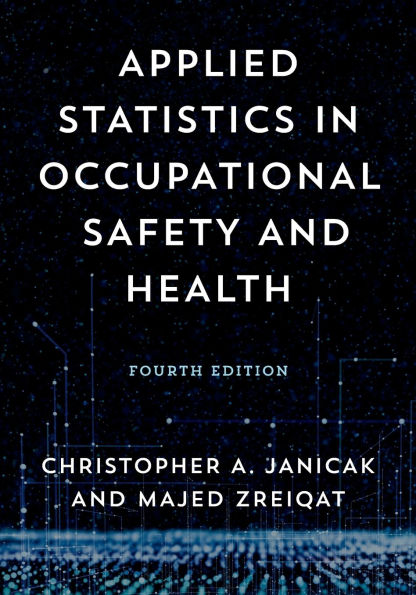Applied Statistics in Occupational Safety and Health
This completely updated fourth edition is designed to provide safety professionals or those studying to become safety professionals with the basic methods and principles necessary to apply statistics properly. Safety professionals often encounter statistics in the literature they read and are required to present findings or make decisions based on data analyses. Statistics can be used to justify the implementation of a program, identify areas that need to be addressed, or justify the impact that various safety programs have on losses and accidents. Safety professionals also use a variety of data in their day-to-day work.
1123980943
Applied Statistics in Occupational Safety and Health presents the reader with practical information to make their job easier. In addition to sample problems and solutions, the authors include easy-to-read charts and tables, appendices containing statistical tables, and a glossary of terms.
Applied Statistics in Occupational Safety and Health
This completely updated fourth edition is designed to provide safety professionals or those studying to become safety professionals with the basic methods and principles necessary to apply statistics properly. Safety professionals often encounter statistics in the literature they read and are required to present findings or make decisions based on data analyses. Statistics can be used to justify the implementation of a program, identify areas that need to be addressed, or justify the impact that various safety programs have on losses and accidents. Safety professionals also use a variety of data in their day-to-day work.
Applied Statistics in Occupational Safety and Health presents the reader with practical information to make their job easier. In addition to sample problems and solutions, the authors include easy-to-read charts and tables, appendices containing statistical tables, and a glossary of terms.
105.0
In Stock
5
1

Applied Statistics in Occupational Safety and Health
226
Applied Statistics in Occupational Safety and Health
226Paperback(Fourth Edition)
$105.00
105.0
In Stock

Product Details
| ISBN-13: | 9781636713793 |
|---|---|
| Publisher: | Bloomsbury Academic |
| Publication date: | 04/07/2023 |
| Edition description: | Fourth Edition |
| Pages: | 226 |
| Product dimensions: | 7.00(w) x 10.00(h) x 0.48(d) |
About the Author
From the B&N Reads Blog
